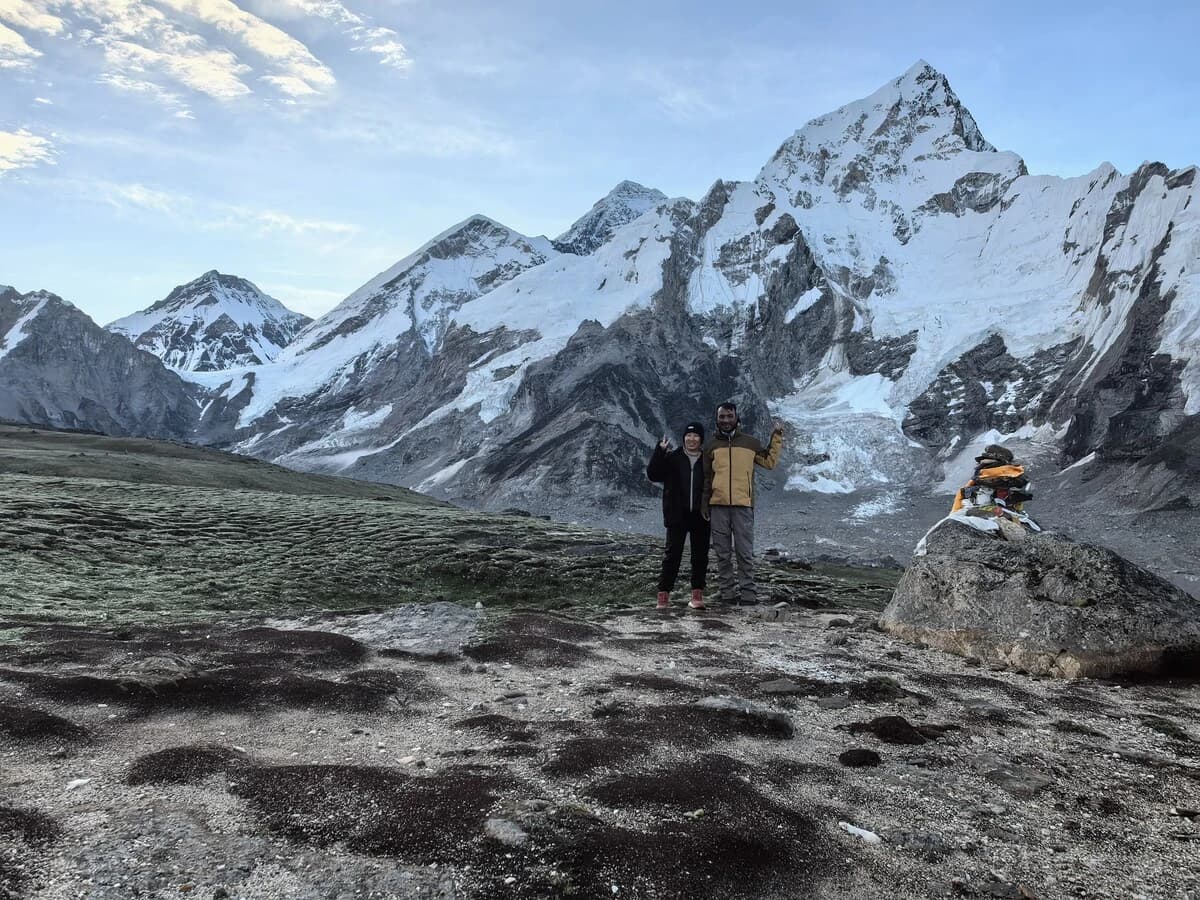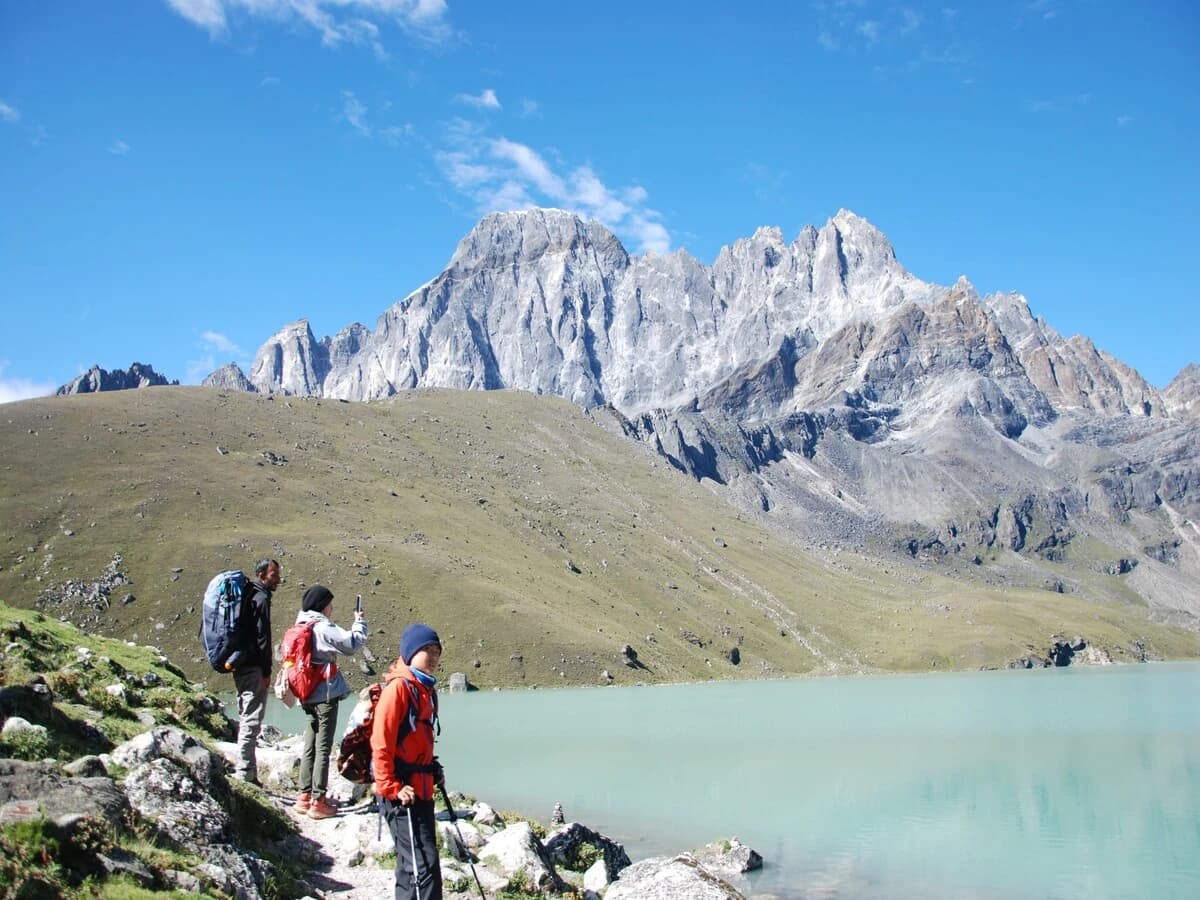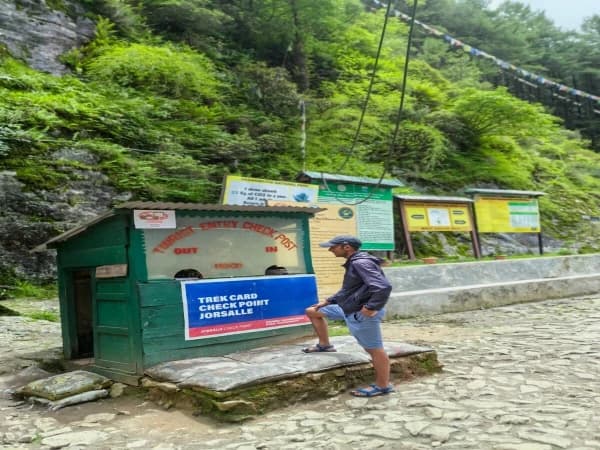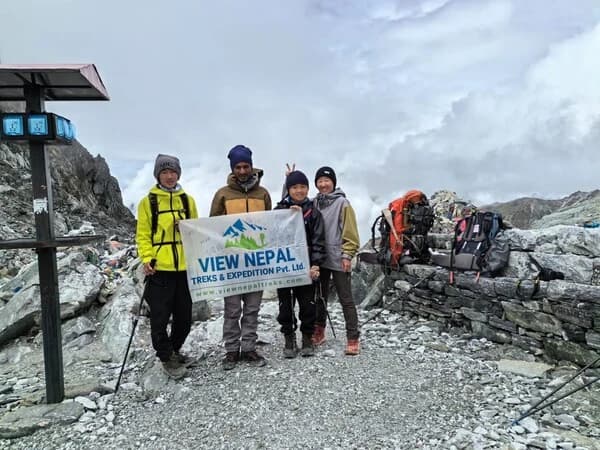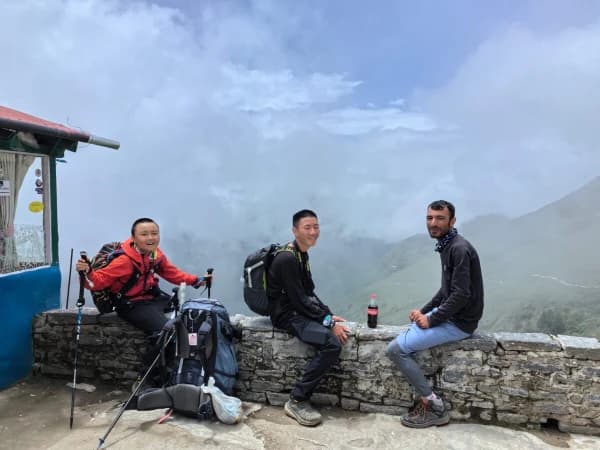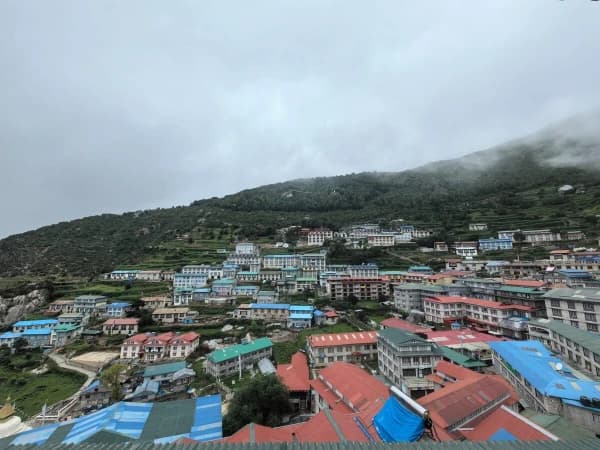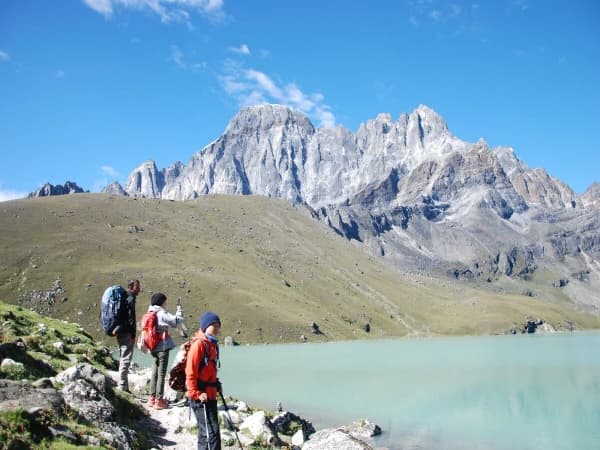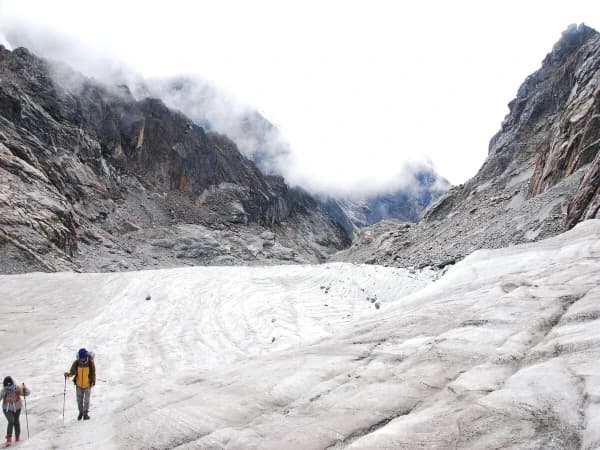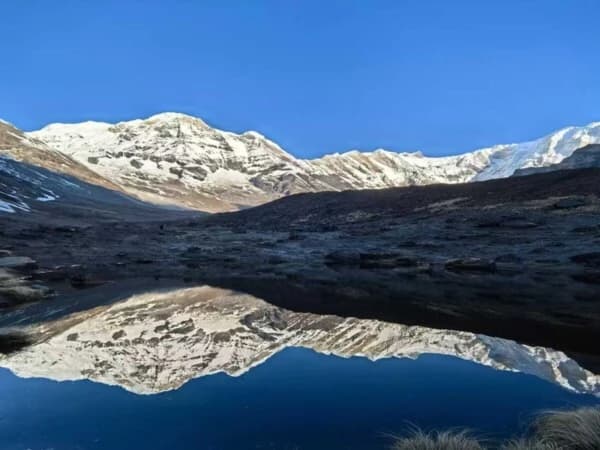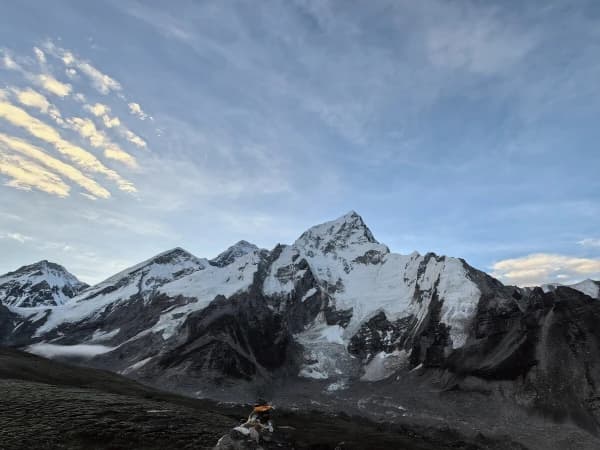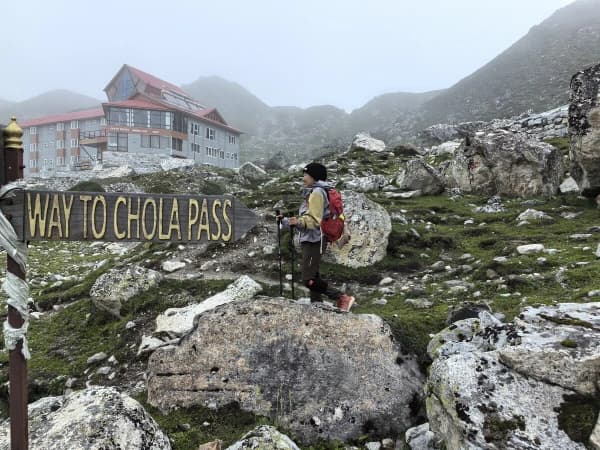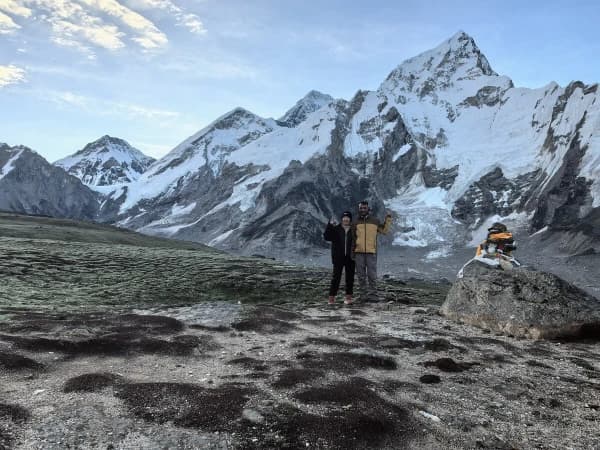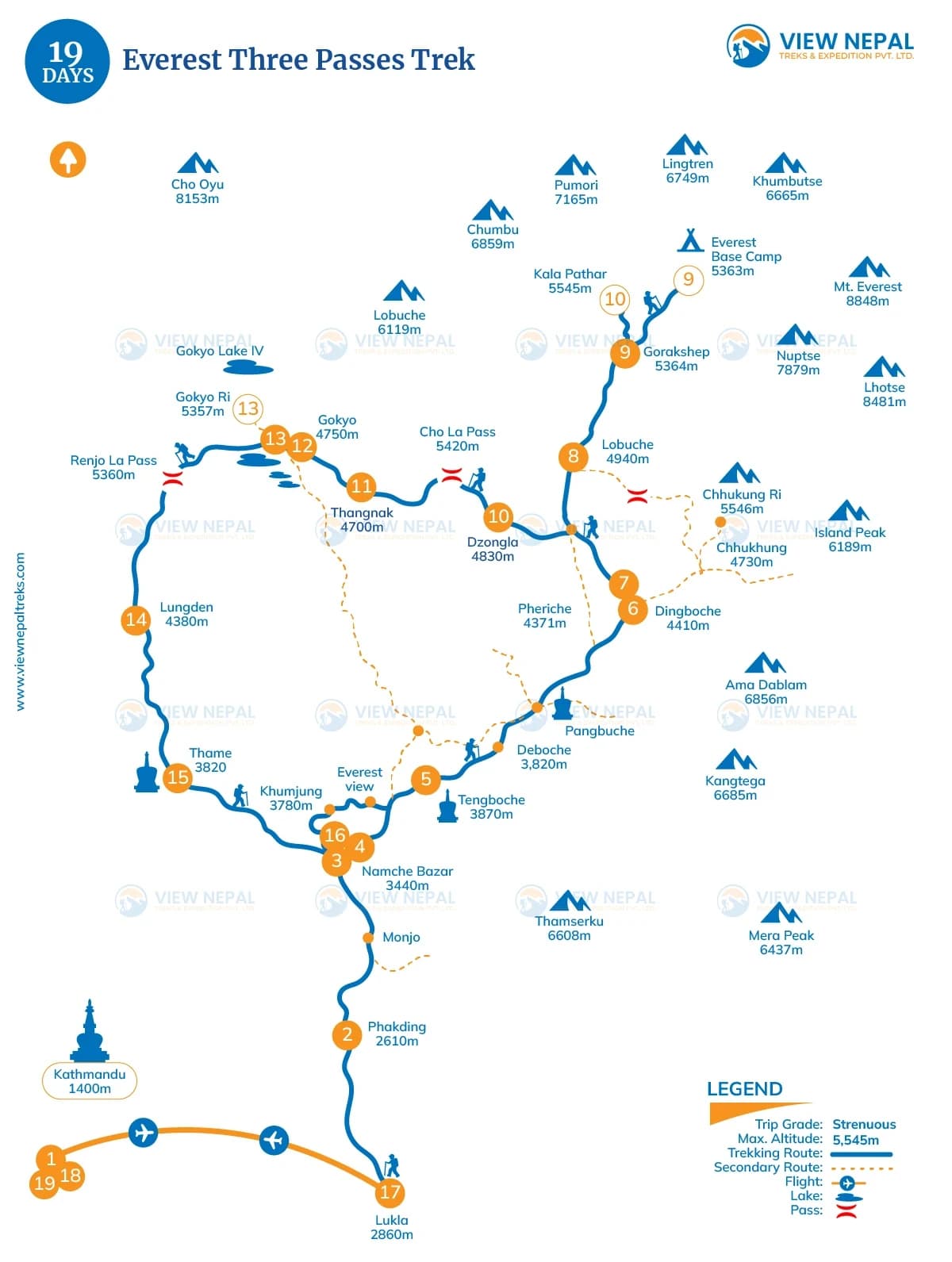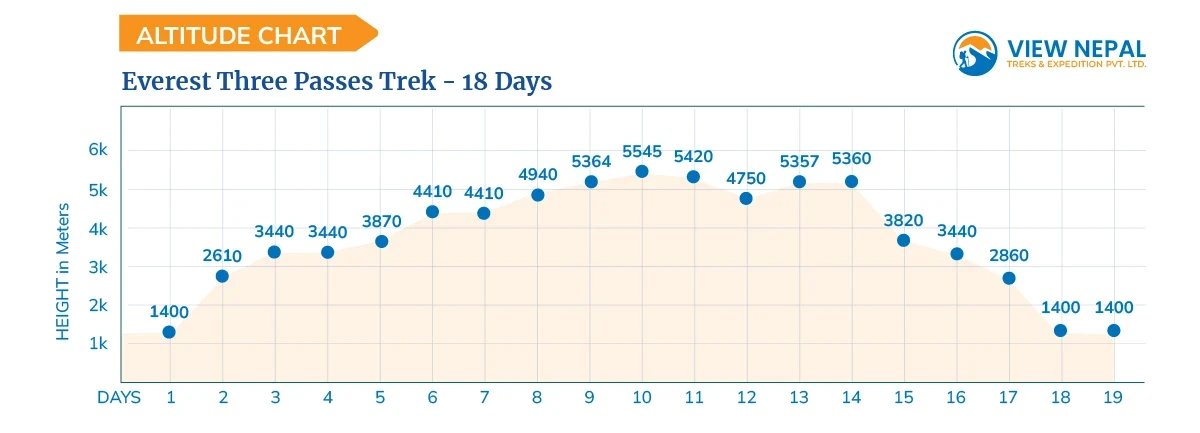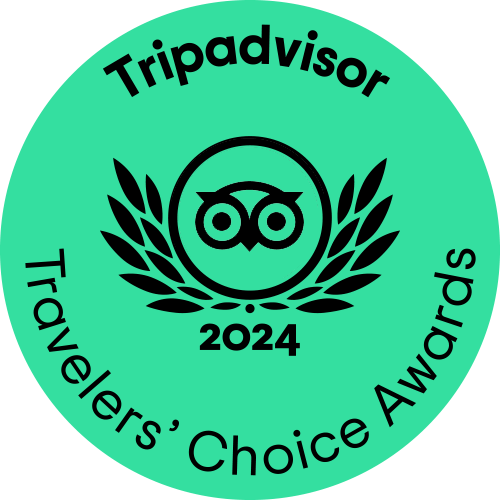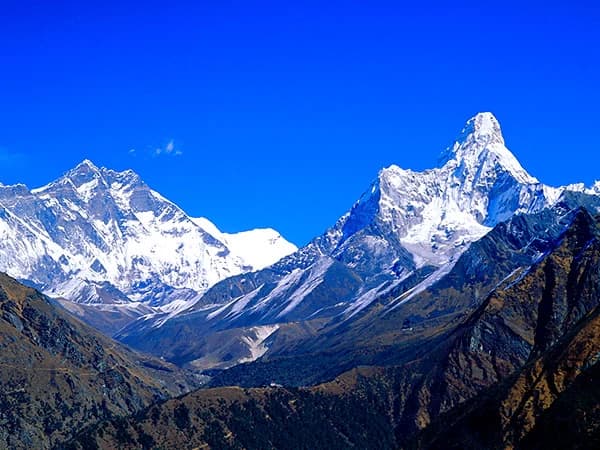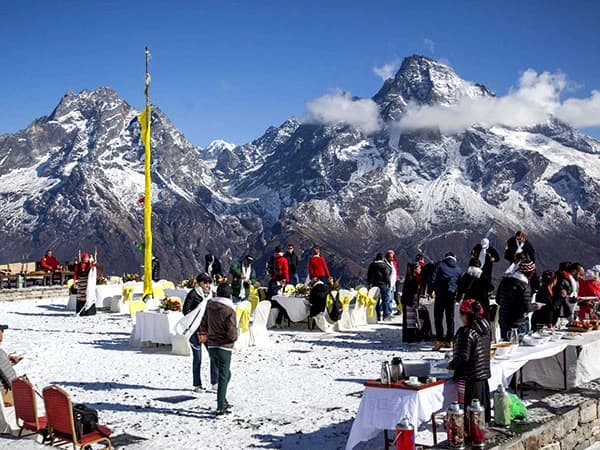Trek Overview
The Everest Three Pass Trek is one of Nepal’s most thrilling and demanding adventures in the Everest Region. It takes you across three high-altitude passes: Kongma La (5,535m), Cho La (5,420m), and Renjo La (5,360m) while offering breathtaking views of Everest, Lhotse, Makalu, and the stunning Gokyo Lakes. This 18–20-day trek explores remote valleys, traditional Sherpa villages, and glacial landscapes, making it a dream for experienced hikers.
The journey begins with a flight to Lukla, followed by a trek through Namche Bazaar, Tengboche, and Dingboche for acclimatization. You will trek to Kongma La Pass, visit Everest Base Camp, hike up Kala Patthar for sunrise views, cross Cho La Pass to reach the turquoise Gokyo Lakes, and finally, you will cross the Renjo La Pass before descending back to Lukla.
The difficulty level is strenuous, requiring excellent fitness, prior trekking experience, and proper acclimatization to handle steep climbs, rugged trails, and high altitudes. The cost ranges between $1,200 and 2,000, covering permits, guides, meals, and teahouse stays, but excludes travel insurance and porter fees. This trek will be perfect for adventure seekers, an off-the-beaten-path experience with fewer crowds, extreme challenges, and alluring Himalayan beauty. Proper preparation, including physical training and packing essentials, is crucial for a safe and successful trek to the Everest Three Passes trek.
Highlights of the Everest Three Passes trek
- Breathtaking Panoramic Mountain Views: Eye-catching vistas of Everest, Lhotse, Makalu, Cho Oyu, and other majestic peaks from high vantage points.
- Crossing Three High Passes: The challenging and rewarding experience of traversing Renjo La (5,360m), Cho La (5,420m), and Kongma La (5,535m).
- Stunning Gokyo Lakes: Witnessing the beauty of the turquoise Gokyo Lake.
- Panoramic Viewpoints: Ascending Gokyo Ri (5,357m) and Kala Patthar (5,555m) for exceptional Everest panoramas.
- Khumbu Glacier: Trekking alongside the massive and impressive Khumbu Glacier.
- Everest Base Camp: An opportunity to stand at the foot of the world's highest mountain.
- Immersive Sherpa Culture: Experiencing the unique traditions and hospitality of the Sherpa people in their villages.
- Monasteries: Exploring ancient and culturally significant monasteries like Tengboche.
- Sagarmatha National Park: Trekking through this UNESCO World Heritage site with its diverse landscapes and wildlife.
How hard is a three-pass trek?
The Three Passes Trek in Nepal's Everest region is tough, demanding excellent fitness and high-altitude experience. It involves crossing three high passes above 5,300 meters, with long days of walking (6-8 hours) on steep, rocky trails, and potential glacier crossings.
The biggest challenge for you will be the altitude. You'll be spending many days above 5,000 meters (that's over 16,000 feet!), where the air has much less oxygen. This means you'll feel tired much faster, even when you're just walking slowly. It's like your body is working extra hard just to breathe. So, you need to be very fit and mentally prepared to push through some uncomfortable moments. It's truly a test of your endurance.

How long is the Everest Three Passes trek?
The Everest Three Passes Trek typically takes around 17 to 20 days to complete, including arrival and departure days in Kathmandu and a scenic flight to and from Lukla, the trek's starting and ending point.
The actual trekking portion usually spans 14 to 17 days, depending on the specific itinerary and the number of acclimatization days. These rest days are crucial for your body to adjust to the high altitudes and prevent altitude sickness.
During the trek, you'll be walking for about 6 to 8 hours each day, covering a total distance of roughly 160 kilometers (100 miles). This includes ascents and descents over challenging terrain and crossing three high passes above 5,300 meters.
How much does the Three Pass trek cost?
The Everest three-pass trek may cost you around $1200 to $2000, which may vary according to the time and season, and the additional facilities and services. The cost of the Everest three-pass trek can be done at a cheaper price as well, but you can trek on a minimum budget independently, where it may be difficult for individual trekkers without a guide or porter, which is quite risky.

